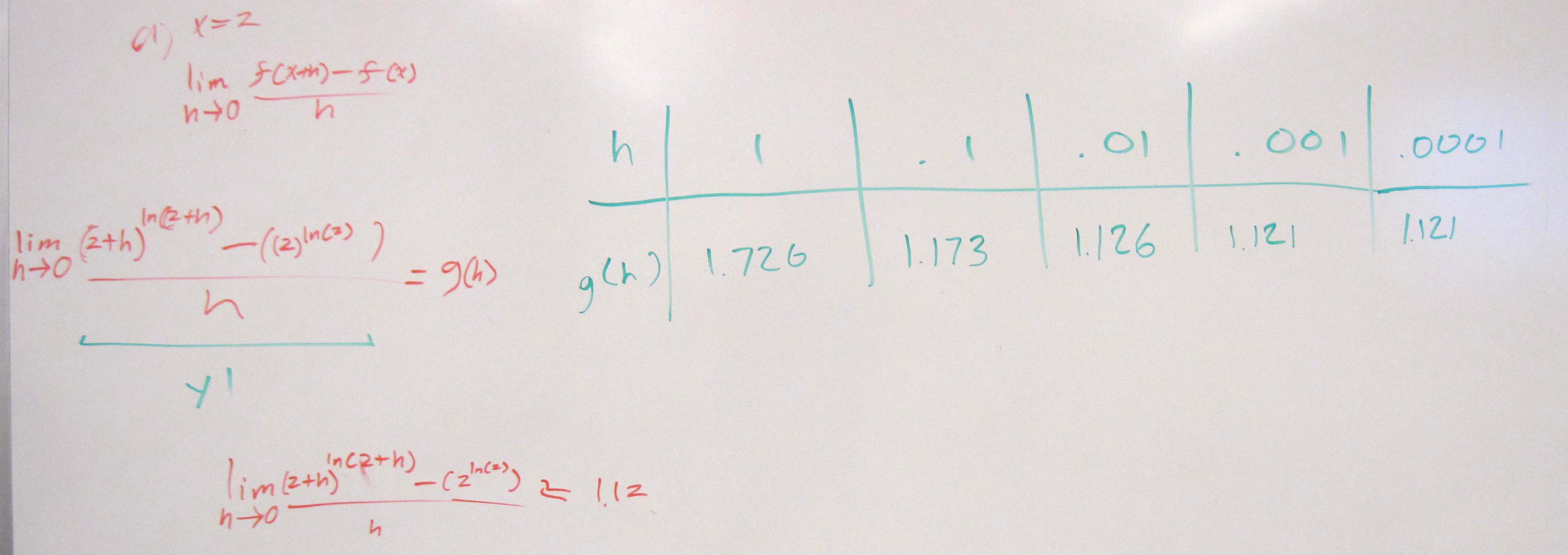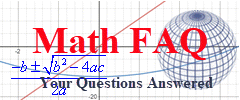The instantaneous rate of change is calculated using the limit
$latex \displaystyle \begin{matrix}
\text{Instantaneous rate of change of }f\text{ } \\
\text{with respect to }x\text{ at }x=a \\
\end{matrix}=\underset{h\,\,\to 0}{\mathop{\lim }}\,\frac{f(a+h)-f(a)}{h}$
For many functions like polynomials, this limit may be calculated algebraically. When this limit cannot be computed algebraically or is very difficult to compute algebraically, we can use a table to estimate the limit. The problems below illustrate the table for the limit.
Problem 1 Estimate the instantaneous rate of change of f with respect to x at x = 2 if
$latex \displaystyle f(x)={{x}^{\ln (x)}}$
Solution In this problem, a = 2. We need to evaluate
$latex \displaystyle \begin{matrix}
\text{Instantaneous rate of change of }f\text{ } \\
\text{with respect to }x\text{ at }x=2 \\
\end{matrix}=\underset{h\,\,\to 0}{\mathop{\lim }}\,\frac{f(2+h)-f(2)}{h}$

Problem 2 Estimate the instantaneous rate of change of f with respect to x at x = 3 if
$latex \displaystyle f(x)={{x}^{\ln (x)}}$
Solution In this problem, a = 3. We need to evaluate
$latex \displaystyle \begin{matrix}
\text{Instantaneous rate of change of }f\text{ } \\
\text{with respect to }x\text{ at }x=3 \\
\end{matrix}=\underset{h\,\,\to 0}{\mathop{\lim }}\,\frac{f(3+h)-f(3)}{h}$
The table shows most values to 6 decimal places. In the last two columns, the values both round to 2.44864.

